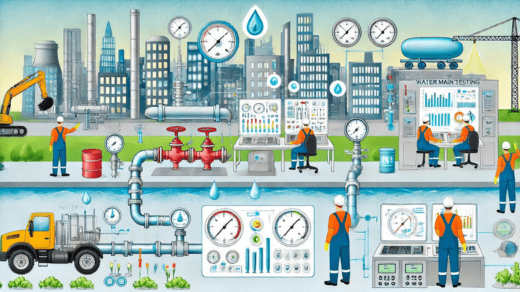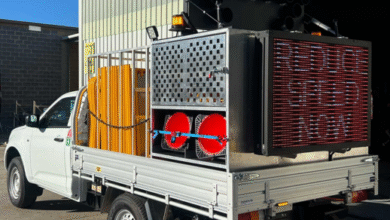Optimizing Water Main Testing: Efficient Practices for Reliable Results

Efficiently test water central systems using systematic pressure testing methods. Ensure thorough inspection for leaks and weaknesses, utilize accurate measuring devices, and adhere to safety protocols. Document results meticulously, perform regular maintenance, and promptly address issues to maintain system integrity and reliability, ensuring consistent water supply and infrastructure longevity.
Introduction to Water Main Testing
Ensuring that water central systems are functioning correctly is crucial for any community. Water main testing ensures the system is sealed and free from leaks, safeguarding the valuable clean water resource. Over the years, various methods and tools, such as the hydrostatic test pump, have been developed to enhance the efficiency and reliability of this essential process. This article delves into the best practices for efficiently testing water central systems, ensuring optimal performance, longevity, and safety.
Modern testing tools and techniques have revolutionized the maintenance and monitoring of water central systems. By utilizing advanced devices, communities can significantly enhance the accuracy of diagnostics, leading to timely and effective maintenance. In the following sections, we will explore the importance of regular water main testing, requisite tools, a step-by-step guide to the testing process, common challenges, and the impact of innovative technologies on water central system maintenance.
Importance of Regular Water Main Testing
Regular testing of water central systems is vital to detect leaks and prevent long-term damage. Early detection of issues within the water central system can save communities from substantial repair costs and ensure a continuous supply of clean, potable water. According to the EPA, water main breaks contribute significantly to water loss in urban areas. By conducting routine tests, municipalities can identify and address potential problems before they escalate, thus conserving resources and maintaining the integrity of the infrastructure.
Regular water main testing schedules can alleviate the risks associated with undetected leaks and system failures. Moreover, communities benefit from increased public health safety, reduced water loss, and minimized disruption to daily life. It is impossible to overestimate the significance of proactive maintenance through routine testing since it guarantees the sustainability and resilience of infrastructure in the face of escalating environmental problems.
Tools Required for Water Main Testing
Various tools are indispensable for conducting thorough and accurate water main tests. These include water main test pumps, pressure gauges, and leak detection devices. Each tool has its set of features and functionalities, contributing to effectively diagnosing and addressing issues within the water system. For example, a calibrated hydrostatic test pump is essential to create the necessary pressure to test for leaks and verify system integrity.
Other vital tools include acoustic leak detectors, which can identify the sound of leaks within pipes, and intelligent sensors that provide real-time data on the system’s condition. Advanced technologies, such as thermal imaging cameras, can also detect temperature changes indicative of leaks, enhancing the accuracy and efficiency of water main testing. Ensuring the equipment is regularly maintained and calibrated is crucial to obtaining reliable results and preventing false readings.
Step-by-Step Guide to Water Main Testing
- Preparation: Gather all necessary tools and ensure they are in good working condition. This includes checking the calibration of devices and ensuring all equipment is free from defects.
- Initial Inspection: Examine the water central system visually to find any problems that stand out, like obvious leaks, corrosion, or pipe damage. This step helps pinpoint areas that may require more focused attention during testing.
- Set Up Equipment: As the manufacturer directs, connect the water main test pump to the system and calibrate it. Ensure all connections are tight to avoid any pressure loss or leakage during the test.
- Perform Test: Run the test pump and record the pressure readings at different points within the system as indicated by your testing protocol. Ensure the system reaches the required pressure level to assess its integrity accurately.
- Analyze Results: Compare the obtained results with standard benchmarks to identify any anomalies or drops in pressure, which may indicate leaks or weak points within the system.
- Consult Experts: If any issues are found, consult technical experts for further analysis and repair recommendations. This step ensures that any detected problems are addressed promptly and efficiently, minimizing the risk of further damage.
Common Challenges in Water Main Testing
Water main testing has its challenges. Common issues include:
- False readings due to faulty or improperly calibrated equipment.
- Need help accessing underground pipes.
- Environmental factors such as soil conditions or weather can affect test results.
Addressing these challenges requires the right tools, expertise, and careful planning. Ensuring regularly calibrated and maintained test instruments can help mitigate many of these issues.
Furthermore, the complexity of modern water distribution systems can make conducting comprehensive tests more difficult. Multilayer pipe networks and varying pipe materials may require different testing approaches. A well-thought-out testing plan that considers these variables and adapts accordingly is crucial. Additionally, training personnel to handle these advanced tools and interpret data accurately is essential for overcoming the common challenges faced in water main testing.
Innovations in Water Main Testing Technology
Technological developments have dramatically increased the accuracy and efficiency of water main testing. Modern test pumps are more reliable and offer better diagnostic capabilities, allowing for more precise identification of issues within the system. Innovative techniques like acoustic leak detection and intelligent sensors have taken water central maintenance to a new level. According to a report from BBC News, smart water grids are becoming increasingly popular in urban infrastructure, offering enhanced monitoring and management capabilities.
Advanced data analytics and machine learning are vital to optimizing water main testing. These technologies can analyze large amounts of data from sensors and historical records to predict future problems and provide preventative measures. This proactive approach helps maintain the water system’s health and prevent costly repairs. Integrating these innovative technologies into standard testing practices paves the way for more intelligent, efficient water-central management.
Conclusion and Recommendations
Water main testing is crucial to maintaining a sustainable and reliable water supply system. Communities can ensure their water systems function optimally by following best practices and utilizing the latest technologies. Regular testing and immediate action on detected issues can prevent costly repairs and environmental damage. To achieve the best results, it helps you stay updated with the latest tools and techniques in the field.
Regular testing and proactive maintenance improve community safety and well-being while protecting the integrity of the water infrastructure. Municipalities can effectively manage their water resources by embracing innovation and committing to diligent testing protocols, ensuring a resilient and sustainable future. Investing in advanced testing tools and continuous education for technical personnel will further bolster these efforts, making water main testing an integral part of modern infrastructure management.




